Topics in Ceramics: History of Ceramics II
Professor: Michele Fricke
“While design is widespread, it has never been popular: it speaks only to an elite.
Correspondingly, design is not concerned with the popular idea of beauty. In fact, it looks down on popular taste.
My own definition of beauty includes popular taste… Beauty is not an elitist’s enjoyment.
The sunset’s colors are for all to enjoy.”
Eva Zeisel
Eva Zeisel was born in 1906 in Hungary and died in 2011 in the United States. She was an influential figure in 20th century design, especially in the field of ceramics. She worked for more than 75 years and was one of the most important industrial designers in the United States. She not only designed and produced tableware in ceramics, but is also known for her furniture, light fixtures, chess sets, glassware, rugs and wallpaper designs. Her life and work were shaped by her desire to connect the past with the present, never to dismiss old styles and art forms. She called herself a “Modernist with a small ‘m’”[1], because of her separation from the Modern Movement (or “Machine Age”) in interwar Europe, which rejected any kind of decoration and did not look into historic sources for inspiration. She was more inclined to the more modern Second-Generation Arts and Crafts Movement, stressed the mass production of affordable but well designed, good quality wares and innovative production methods. All of her prototypes were finished by hand.
Zeisel was interested in historicism and incorporated the knowledge about art, architecture, and design that she acquired in Hungary into her work in the US. Her early life was shaped by the strong, forward-thinking women who had raised her, the intellectual family friends that brought different opinions into conversations about the world, and the political and social turbulence in the early twentieth-century Hungary. Rumor has it that when she died on December 30, 2011 in New York, at the age of 105, she was designing a new eggcup.[2]
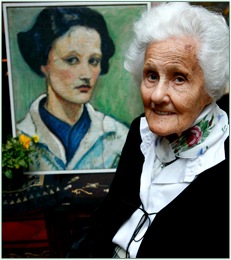
Image 1: Eva Zeisel with one of her self-portraits, from c. 1925
Éva Amália Striker was born on November 13, 1906 in Budapest, Hungary. Her family was part of a wealthy and influential Jewish community. Budapest was experiencing a cultural renaissance through the intellectual uprising in the early 1920s.[3] Close family friends were the Marxist philosopher György Lukács, the sociologist Károly Mannheim, and Ervin Szabó, a leader of the prewar Hungarian anti-war movement. Her uncles Karl and Michael became renowned professors in the United States, in economics and philosophy, respectively. The family had always been involved with Hungarian intellectuals, painters, and Russian revolutionists from the revolts in the 1950s.[4] The women were active feminists. Postwar social democratic politics informed Zeisel’s early life and seem to have motivated many of her choices in life, as well as her designs.[5] She became “an interesting example of an émigré artist”[6] whose career took her into many directions, cultures and places.
Zeisel was raised by strong feminist women. Her maternal grandmother Cecile embodied the “New Woman” and had joined the “early feminist movement in Central Europe.”[7] Zeisel’s mother Laura Polanyi Striker was a very intellectual woman, who studied languages and literature. She was the first women to receive her doctorate in history from the University of Budapest. Zeisel was raised in a progressive and liberal household. These women believed in the “uncivilized child,” who could play freely and be creative. She studied the arts, music and crafts. Nudity was encouraged so that she would not be ashamed of her body. Zeisel enjoyed the freedom and a sense of play was always present in Zeisel’s designs.[8]
When Zeisel was a young woman, she started taking guided tours around Vienna in Austria to study art, architecture and design. She became fascinated by the Renaissance and Baroque periods and developed a great appreciation and understanding for their historical styles and movements. Throughout her career as a designer she linked her art “closely to its social and economic context,”[9] drawing inspiration from these eras. When she was 18, she enrolled in the Kepzomuveszeti Academia (Budapest Royal Academy of Fine Arts) to become a painter. She was influenced by the Hungarian painters who had studied in Paris, like Jànos Vaszary, Czigàny and Màrffy while she was at the Academy. These were painters “influenced by Cubism, Constructivism, and Expressionism, and often depicted workers and peasants,”[10] portraying a simple life and introducing folk culture to Zeisel. She discussed art with the painters and developed a style of painting self-portraits that were feminine, yet very bold. She was clearly influenced by Marie Laurencin, a French painter who studied feminine subject matter and has been associated with Spanish painter Pablo Picasso and French painter Guillaume Apollinaire.[11] After eighteen months she returned home.
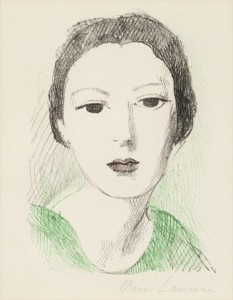
Image 2: “Jeune fille de face “(1937), Marie Laurencin
Her mother, having witnessed Zeisel’s grandfather’s business failure, wanted Zeisel to learn something practical, like a craft. Zeisel started a six-month apprenticeship with a local potter named Jakob Karapancsik. She had been introduced to folk pottery at the academy and also by an aunt early on in life and her plan was to follow into her footsteps and be able to support herself as a fine artist selling her ceramics. Karapancsik trained her in the Arts and Crafts Movement way, to prepare her clay from local supplies, wedging it to be used, throwing and glazing her own pots, before they were fired in the local kilns.[12] She traveled around the country with Karapancsik to install and repair tiles needed for “tiled stoves [that were used] across central and eastern Europe for domestic heating”[13] and became “the first woman member of the Hungarian Guild of Chimney Sweeps, Oven Makers, Roof Tilers, Well Diggers, and Potters.”[14]
In March 1925, she transformed her garden shed into a pottery studio and opened a shop. She was now able to support herself financially through her work and developed her own version of “black pottery.”[15] She built her own underground kiln for the traditional firing method of folk pottery typical in Hungary. “This smoked earthenware was made from molded clay placed in pits covered over with soil to make them airtight; smoke from the pine logs used to heat the pit created a dark surface on the clay (hence the term “Black Pottery”).”[16] Her forms were inspired by the Wiener Werkstätte (Vienna’s Workshops) potters, such as Gudrun Baudisch and Vally Wieselthier, who made open, curvy and intricate pots.[17] Zeisel was also influenced by the philosophy of the Deutscher Werkbund (German Work Federation), whose members wanted to reconcile the fine arts, architecture, and design with industry. Henry van der Velde, a painter from Belgium, had founded the Werkbund. He gave up painting for the betterment of society, believing that he had no right to paint to make the merging of all the arts even more notable. This school of thought, combined with the Wiener Werkstätte, became the Bauhaus movement in 1919. Unlike Henry van der Velde, Zeisel incorporated her painting into her folk pottery. Her forms were thrown on the wheel and she sold her wares at the local market.
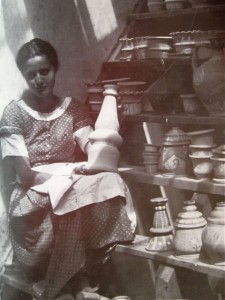
Image 3: Eva Zeisel with pottery from her own studio, 1926
Efficiency was important to Zeisel and she was, like many potters in Europe, marrying the ideas of the Arts and Crafts Movement with the ideals of the Design and Industries Association (DIA), which was founded in 1915 in Britain. The DIA was closely associated with the Deutscher Werkbund and these new ideas compelled a new way of thinking. The second generation of the Arts & Crafts Movement was born and its members thought of themselves as modern people who welcomed technology, new designs, and modern production methods, like mass production. Although Zeisel was never a fan of the “machine aesthetics” of the Bauhaus, it had an undeniable influence on her career and her designs.[18] Bauhaus ceramics were designed with the optimal organization of forms in mind and were influenced by constructivism. The designs were geometric, practical, simple, and efficient. Form and function were balanced. They borrowed the aesthetics of the Russian Revolution: a blend of purism and cubism. Zeisel later worked these aesthetics into her own designs, yet “[h]er designs are classic because, although clearly of their time, they remain timeless. They are true not to modernism but to the purity of form.”[19]
In 1926 Zeisel became interested in mass production methods for ceramic wares and was hired at Kispester-Granit in Budapest. The company specialized in sanitary products and toilets, but she became the lead of the decorative art department, a position that was created for her, after the manager of the company visited her studio and saw her pottery. Zeisel started prototyping and molds were made and mass produced. According to Zeisel, she designed “ashtrays in the shape of unicorns”[20] that were then sold to customers in the United States. It was here that she began designing prototypes with cut out paper models, which became key elements in designing her forms. After six months at Kispester-Granit, the factory returned to manufacturing and Zeisel moved on to work at Hansa Kunstkeramik, in Hamburg, Germany. Her new job required her to replicate “relatively uniform items,” but she had neither the skill nor the desire to mass produce in this fashion. Instead she started prototyping for production, but her boss was unhappy with her style of working and six month later she returned to Budapest.
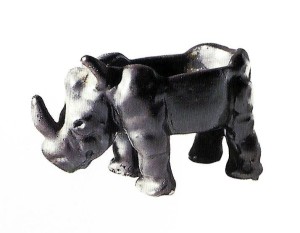
Image 4: Animal Dish for Kispester-Granit in Budapest, Hungary, c. 1926
In 1928 she returned to Germany as sole designer for the Schramberger Majolikafabrik. The factory specialized in mass produced dinnerware and common household objects. Although Zeisel did not have the skills of an industrial designer, she got some help with her drafting skills and decided not to produce her prototypes on the pottery wheel. “I had to show that I was not a craftsperson but a real industrial designer” she later wrote.[21] She was impressed with the modern and efficient production and working methods she discovered at the close-by clock and watch factory Junghans, and introduced molds into the mass production process.
Her aesthetics at that time came from the Art Deco style, which she discovered at the 1925 International Exposition of Modern Industrial and Decorative Arts in Paris. There she saw “the work of Le Corbusier, Jean Luce, Margarete Heymann-Marks, and other modernists.”[22] Her work started to “include circular forms, concentric rings, undulations, asymmetry (she placed small shapes or decoration asymmetrically on symmetrical forms), and flattened, truncated, oval, and even streamlined forms.”[23] She designed an entire coffee service decorated with polka dots and her pitchers had flattened sides to save room in the refrigerator. Her work at Schramberger suggests that she was familiar with “the refined reworking of traditional forms” of Bauhaus designers Otto Lindig and Marguerite Friedländer.[24] “Although her forms reflect the streamlined modernist aesthetic popular at the time in Germany, their buoyancy and grace, their sense of proportion, and their lightheartedness combine to defy their being relegated to a single period.”[25] Her many influences, old and new, appeared in all of her designs. In “On Design: The Magic Language of Things,” she writes about the modern movement and its use of “functional style” and geometry. She notes that, although useful objects make beautiful objects, they are still unnecessary. Nobody needs an ergonomic pitcher to survive. Not all cultures use forks and knives. Her thoughts about creating objects, therefore, lay in the feelings these objects evoke. She wanted to create something beautiful that is comfortable to use.[26]
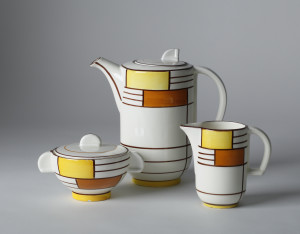
Image 5: Eva Zeisel, Coffee Service
(Form 3269, Dekor 3526), 1929
Manufacturer: Schramberger Majolikafabrik, Schramberg, Germany
Zeisel watched closely as her prototypes were translated into actual wares, wanting her designs to be replicated precisely as she made them. She started to document all of her work and controlled her own imagery for advertisements. She had a good eye not only for 3D objects, but also for photographs. Soon her work was featured at the bi-annual Leipzig trade shows and in trade magazines such as Die Schaulade.[27]
Zeisel was lonely in the small southern town of Schramberg. She was active in the Social Democratic Party (SPD) and union activities, but longed for a more exciting environment. Her mother rented a studio space in Berlin, at the time one of the “most dynamic and diverse cities in Europe with a thriving artistic, cultural, and intellectual life.”[28] Zeisel settled in Berlin, enjoying parties and conversations with writers, artists, scientists, sociologists, architects and other leftist intellectuals. In Berlin she also met both of her future husbands: Alex Weissberg, a Polish Austrian physicist, and Hans Zeisel, a sociologist. They were friends of her uncles Karl and Michael, and belonged to the “Forum Romanum for the exchange of ideas on how to best save the world”[29] for progressive, left-leaning intellectuals. She freelanced for the Carson Company and designed for Hirschau. Politics in Germany had changed and her close ties to the communist intellectuals made her consider immigrating to the USSR. At the time she felt a desire for all things Russian, because she had been so close to its culture and its people.
When the Great Depression hit Europe in the 1930s, she married Alex Weissberg, by then a researcher in Kharkov, in Ukraine. In Ukraine, she saw poverty for the first time. People were starving and the unemployment rate was staggeringly high. The USSR was experiencing a great famine and people were dying on the streets. Zeisel decided to stay nonetheless, not only because she was highly valued as a designer at the renowned Imperial Porcelain Factory (Lomonosov State Porcelain Factory) in Leningrad, but also because she felt a strong bond with the Russian people.[30]
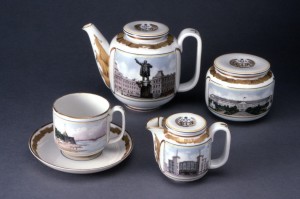
Image 6: Leningrad tea service.
Designed by Eva S. Zeisel and Varvara Petrovna Freze,
manufactured by Lomonosov Porcelain Factory, 1935
Her style changed dramatically, and she started combining her usual clean and modern lines with the sensuous shapes of the 18th century Russian porcelain she discovered in the factory collection. The Russians rejected the modernist designs coming from Europe, so she sometimes spent hours with her modeler refining a single piece. While at the Imperial Porcelain Factory she separated from her husband. She resigned from Imperial Porcelain in 1934 and moved, initially to the small town of Orekhovo-Zuevo, close to Moscow, where she accepted a position at Dulevo factory, one of the largest ceramic producers in the world, and then to Moscow, where she became artistic director of the Ukrainian China and Glass Trust of the Russian Republic. There she designed for the masses. Especially plates were in high demand for the hundreds of millions of Russians who were just discovering pottery.[31] She incorporated some of her Art Deco designs into her table settings, but its spare design was seen as representative of a “spiritual bankruptcy of the West.”[32] Patriotic scenes and exotic motifs became popular.
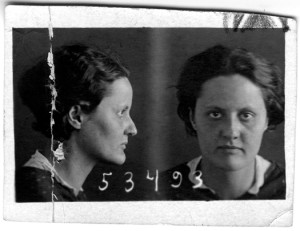
Image 7: Mugshot of Eva Zeisel upon her incarceration at NKVD prison in Russia, 1936.
In Moscow she fell in love with a high-ranking officer of the NKVD (later KGB), who was a former member of the Red Army and undercover as a businessman. According to Zeisel, he was the love of her life. Despite their love, or maybe because of it and Stalin’s fear of opposition, Zeisel was accused of being a “Trotskyite courier”[33] who was planning to assassin Stalin. Trotskyite was Stalin’s political opponent and had ties to left wing socialists. She was arrested on May 28, 1936. Stalin had charged many of Russia’s ethnic Germans with similar crimes. The majority of them were executed. Zeisel spent most of her time in solidary confinements where she occupied her mind by designing objects and playing chess games in her head to stay sane. She once slit her wrists, after making a false confession and experienced a moment of complete despair and hopelessness. Fortunately she was saved. On September 17, 1937, she was inexplicably released and went to Vienna, where she reconnected with her longtime friend from Berlin, Hans Zeisel.[34]
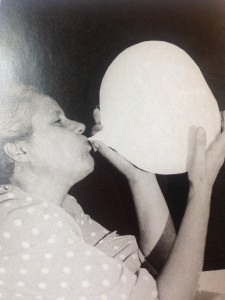
Image 8: “Blown-Up” paper cut-out
When Germany seized Austria in 1938, Zeisel along with many other Jews, left the country. She and Hans went to England where they married in July of 1938, right before they immigrated to the United States. They settled in New York, which was the preferred destination for Jewish intellectuals who had fled the Nazi regime. Zeisel supported herself and her husband by designing household items, like vases, and boxes, before she landed a job teaching design at the Pratt Institute in Brooklyn. “She proposed teaching ceramics from an industrial point of view as opposed to a handicraft, at just the time the college was pioneering the teaching of industrial design […], the first course in which had begun only five years earlier at the Carnegie Institute of Technology.”[35] Zeisel taught in the style of the Wiener Werkstätte and the Deutscher Werkbund. The designs had to be worked out in detail without compromising their functionality. She established an apprenticeship for her students at Bay Ridge Specialty Company, where the students gained practical experience with industrially designed ceramics.[36] Where she departed from her Bauhaus inspired teaching style, however, was her integration of sensuous lines and her need to develop forms that express emotions or what she called “the playful search for beauty.”[37] Her students had to translate their shapes into words, such as “cozy, cheerful, or compact.”[38] She introduced her paper cutting technique, drawing her designs on a piece of paper, cutting them out and using the created shapes for prototyping.[39] “When beginning a design by sketching its outline in two dimensions, you can define its character, even consistency – whether it is soft and rubbery, pokable or squeezable, filled with air, or pullable, like taffy.”[40]
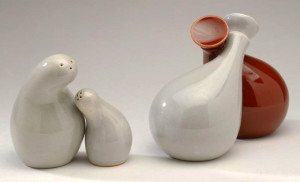
Image 9: Town and Country series, salt & pepper shaker,
oil & vinegar set, introduced 1946,
manufactured by Red Wing Pottery, Minnesota
Eliot Noyer, the director of MoMA (Museum of Modern Art), helped her mature into a first-class industrial designer. Although Noyer had been working as an architectural student at the Bauhaus school under Walter Gropius and Marcel Breuer, they found a common language in Zeisel’s designs. Her prototypes were exhibited at MoMA’s New Shapes in Modern China Designed by Eva Zeisel in 1946. Although these prototypes had not been in production yet, they established her reputation as a leading designer of ceramics in the United States. Zeisel and Hans were still financially struggling and even though Hans was now teaching economics at Rutgers University, they could have never afforded one of Zeisel’s Museum line pieces.[41] Other commissions followed, such as the Town and Country dinnerware line for Red Wing Pottery, a line of inexpensive earthenware dishes that postwar customers could afford. It had a colorful and youthful design, organic, yet was contemporary and clean, with an emphasis on fluid forms and what Zeisel terms “soul impact.” “Zeisel’s refined postwar curving forms ranged from the Baroque forms of her native Hungary, the elegance of Russian porcelains, and her own designs in the USSR to the restrained elegance of designers such as Friedländer and Petri.”[42] It became one of Zeisel’s most popular designs among curators and collectors. The best-selling item in this series is the nestling salt and pepper set that embodies a mother and child, or that what Zeisel describes as “[making] love to each other.”[43] Her designs are in relationship to each other and always show a “family relationship,”[44] through their lines and shapes.
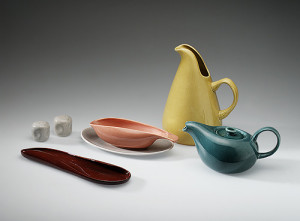
Image 10: American Modern dinnerware, 1937
Russel Wright (American, 1904–1976)
Glazed earthenware
In 1946, Zeisel’s work was featured in the Everyday Art Quarterly. The article “Contemporary American Ceramics” displayed Zeisel’s work with that of Florence Forst, and Russel Wright.[45] Wright, at that time, was probably the best known designer in America. He designed furniture and ceramics and he was famous for his Iroquois “China Ware”, also called “American Modern” in 1937.[46] This became the number one selling dinnerware of all times in the United States. Wright was probably inspired by Salvadore Dali when he designed the prototypes because the dishes remind one of the melting clocks in Dali’s paintings. Wright was an industrial designer and had no pottery background. He went to Alfred University to develop the glazes for his wares. The dishes came in all kinds of colors, just like the Fiestaware that had been designed by Frederick Rhea in 1936, although Wright chose a more muted palate. These dishes were meant to be well designed, finely produced, yet cheap and affordable for the masses to purchase during the era of the Great Depression. The variety in color encouraged buying pieces in different colors to mix and match them. The colorful dishes were intended to lighten the mood during these hard times. Zeisel’s Town and Country dinnerware was a response to Wright’s design, made from earthenware and available in “soft blue and chartreuse, sand and peach, dark brown and a gun-metal black.”[47]
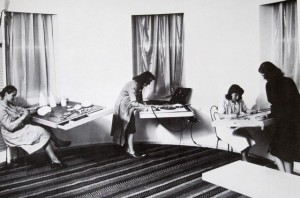
Image 11: Eva with assistants,
Riverside Drive Studio, NYC, 1947
The Zeisels’ financial situation improved through the numerous commissions for Zeisel’s designs. She now worked from her basement studio and hired interns and assistants to manage the workload. Most were her former students. Her studio was now outfitted with ““aging cabinets,” illuminated shadow boxes for looking at prototypes from all possible angles and in different lights, and a fully equipped workshop for making models.”[48] She also started to design plastic products, glass syrup containers and stainless steel wares for General Mills. Materials, in her eyes, were neither honest nor dishonest, unlike Arts and Crafts movement’s philosophy “… that there are certain ways of using a material that are “correct” while others are “incorrect.” But there are no correct or incorrect usages, only performances with more or less virtuosity.”[49] She designed a 100th anniversary dinner service for United China and Glass, the first service that was designed in the US and produced in Japan. Work that she designed for the Loza Fina Company of Mexico was shown in the Arte en la Vida Diaria (Arts of Daily Life) in Mexico City. She designed for Hall China Company in East Liverpool, Ohio and her Tomorrow’s Classic Line went into production in 1952. These wares were designed like an “intangible family resemblance, among aunts and uncles and cousins […] which belong together, like members of the same extended family.”[50] She also designed a casual-style dinner service for Western Stoneware and now received royalties, rather than lump sums for her designs.[51]
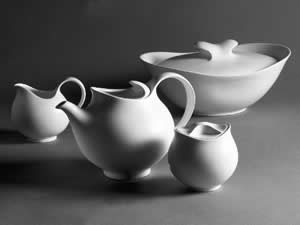
Image 12: Hall China Company:
Hallcraft Tomorrow’s Classic, 1952
Hans took a job as a law and sociology professor at the University of Chicago and the family moved with him to Chicago. Zeisel resigned from her teaching job at Pratt Institute and closed her studio. Hans wanted her to be home with their two children, now that he was financially supporting the household. Zeisel became restless without a creative outlet and moved back to New York a year later and reopened her studio. She designed for Prestige Glassware, and then designed a line of dinnerware sets: Kitchenware (1955) and the highly acclaimed Hallcraft Century line (1956), both for Hall China. For her Hallcraft designs, modelers and moldmakers at Hall China helped Zeisel create her prototypes. Zeisel worked closely with her associates and former students from Pratt Institute. She designed the forms and her assistants designed the decal patterns.[52] Unfortunately “… its extravagantly attenuated forms were beautiful to behold, [but] the service was not well suited to packing and shipping. The pieces often broke in transport. [Hallcraft] was not a commercial success.”[53]
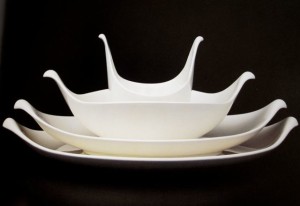
Image 13: Eva Zeisel “Hallcraft/Century” Platters and bowl for Hall, c. 1957
In 1958 Zeisel went to Germany to work on Rosenthal’s Eva dinnerware. From there she travelled to Italy, designing dinnerware and room dividers for Mancioli, which unfortunately never went into production. The two dinnerware lines she produced in Japan, as well as a commission she worked on for a company in Thailand were never produced either.
She created the last produced ceramics commission for Hyalan Pottery of North Carolina in 1964, before the demand for her designs dropped. Companies from Japan and other countries produced cheaper wares and began to dominate the market. The taste for industrial designed ceramics changed, when, in the 1960s and 1970s pottery encountered a new taste for hand-thrown vessels. Bernard Leach and Shoji Hamada brought a new aesthetic into pottery, and potters like Warren McKenzie and Jeff Oestrich, who studied in England with Leach, introduced the philosophy of “mingei,” or Japanese folk pottery to America. The movement’s mission was to make pots by the people, for the people, and potters were urged to “retire to the country and make pots,”[54] make affordable and simple handmade pottery from local materials for use by the masses. The potters were to work anonymously and for the people.
As Hans’ career flourished, Zeisel closed her studio in the early 1960s and joined the peace movement, protesting the US involvement in Cambodia and Vietnam. She also started writing, mostly about racism, but also composed her memoir about her imprisonment under Stalin thirty years earlier. By then, she was still considered “guilty [of] treason in the USSR”[55] but she finally started healing from that traumatic event.[56] Hans and Zeisel’s relationship was not a harmonious one until the later years, right before Hans’ death in 1992, but they visited each other often in Chicago and New York while living apart.
In the 1980s the world was ready for Zeisel’s designs once again. She was a recipient of the Senior Fellowship Award from the National Endowment of the Arts and used the funds to revisit her old designs. She went back to designing for Zsolney and Kispester-Granit in her native Hungary and in 1984 she had a retrospective: Eva Zeisel: Designer for Industry. In that same year her stoneware dinner service Pinnacle went into production in Yamada Shoten in Japan, which she produced for the International China Company. In 1986, despite Russia’s haunting accusations against Zeisel, the Hungarians finally awarded her the Middle Cross of the Order Merit of the Hungarian People’s Republic. In 1988 she received an honorary doctorate from Britain’s Royal Academy of Art. Her retrospective exhibition was finally shown in St. Petersburg and Russia finally acknowledged her contribution to Soviet ceramics.[57]
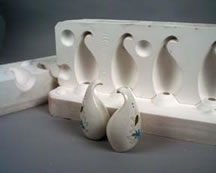
Image 14: Mold for Hallcraft Salt and Pepper
In 1999, original molds from Zeisel’s dinnerware lines Town and Country and Hallcraft were rediscovered and selected pieces were reproduced.[58] Her production molds and designs for Hall China were exhibited in Lost Molds and Found Dinnerware: Rediscovering Eva Zeisel’s Hallcraft at the Schein-Joseph International Museum of Ceramic Art at Alfred in New York. [59]
The Hallcraft I line, Tomorrow’s Classic, designed by Eva Zeisel, ca. 1949-50, originally had no decal decoration. Produced from Hall China’s demi-vitreous body, which is unique in its whiteness and elegance, the undecorated white dinnerware forms have been described as elongated and futuristic, but can easily be characterized as simply beautiful. The design of this undecorated white ware is in harmony with an Eva Zeisel truism, “When in doubt, buy white.”[60]
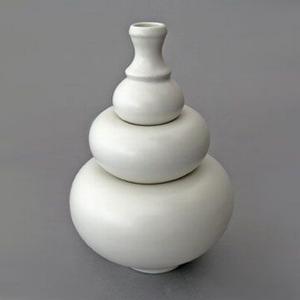
Image 15: Pillow Stack Vase for KleinReid, 1999
Zeisel designed in metal, glass and porcelain for Nambé company of Santa Fe, New Mexico in 1999. In the same year she developed “nesting vases” in collaboration with James Klein and David Reid. She designed a limited edition martini glass, “Reign” for the Bombay Sapphire company in 2000, a low-cost mass produced tea kettle, the “Eva Kettle” for Chantal in 2005, and an expensive handmade rug for The Rug Company in London in 2008. In 2008 a combination of Zeisel’s redesigned lines of Classic Century, Tomorrow’s Classic, and Century went into production for Crate & Barrel in union with Royal Stafford. It was called One-O-One. “Pirco Wolframm, who worked with Eva before and during the last […] years of Eva’s life, said that the levels of intensity and creativity felt no different; she was just as involved with each and every line and about each and every project.”[61] She died December 30, 2011 in New City, New York at the age of 105.[62]
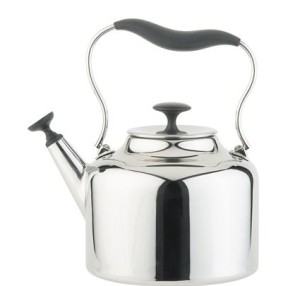
Image 16: “Eva Kettle” for Chantal, 2005
Throughout her career, Eva Zeisel was one of the most influential industrial designers of the 20th century. There was a great demand for her timeless designs in the 1930’s as there was seventy years later. Her style remained clean and simple through her shapes, with a sense of elegance, sophistication and femininity in her line work. She is best known for her ceramic dinnerware, yet she was always eager to explore and work with other materials, like glass, wood, metal, paper, wool and textiles. She never stopped designing and the sheer number of her creations fills volumes. It is astonishing to see the variety in her designs, yet the common path she followed throughout her work. Zeisel’s designs can always be recognized as hers, yet they never became predictable. Eva Zeisel was a true icon of 20th century industrial design.
“Beauty is Kitsch, Art is Shit:
Where do We Go from Here?”
Eva Zeisel
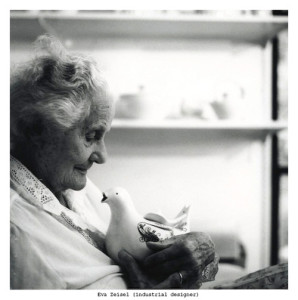
Image 17: Eva Zeisel (Industrial Designer)
1906-2011
Budapest, Hungary – New City, NY
Bibliography:
Carney, Margaret. Lost molds and found dinnerware: rediscovering Eva Zeisel’s Hallcraft. Alfred, N.Y.: International Museum of Ceramic Art, 1999.
Cohn, Caitlin. “Eva Zeisel,” Goldstein Museum of Design Blog, University of Minnesota, January 9, 2012, http://blog.lib.umn.edu/gmd/goldsteinmuseum/2012/01/eva-zeisel.html. 12 April 2014.
Dietz, Stefanie. “Eva Zeisel. Keramik & Design,” Die Neue Sammlung, The International Design Museum Munich, 2013, http://www.die-neue-sammlung.de/press/?page_id=6805&lang=en. 30 March 2014.
Eidelberg, Martin P., Johnson, Paul, and Carmel, Kate. Design 1935-1965: What Modern Was: Selections from the Liliane and David M. Stewart Collection. Montreal: Musée des arts décoratifs de Montréal, 1991.
Hamilton, William L., “Eva Zeisel, Ceramic Artist and Designer, Dies at 105,” Art & Design, The New York Times, December 30, 2011, http://www.nytimes.com/2011/12/31/arts/design/eva-zeisel-ceramic-artist-and-designer-dies-at-105.html?pagewanted=all&_r=0. 15 April 2014.
Hennessey, William J., and Lynes, Russell. Russel Wright, American designer. Cambridge, Mass.: MIT Press, 1983.
Kirkham, Pat, Moore, Pat, Wolfframm, Pirco. Eva Zeisel: life, design, and beauty. San Francisco: Chronicle Books LLC, 2013.
Labaco, Ronald T., and Zeisel, Eva. “”The Playful Search for Beauty”: Eva Zeisel’s Life in Design.” Studies in the Decorative Arts 8, no. 1 (2000/2001): 125-138.
“Lost Molds and Found Dinnerware: Rediscovering Eva Zeisel’s Hallcraft,” The Schein-Joseph International Museum of Ceramic Art, New York State College of Ceramics at Alfred University, http://ceramicsmuseum.alfred.edu/exhibitions/eva/. 6 April 2014.
Moore, Pat, “Eva Zeisel Forum.” Eva Zeisel Forum, 2002, revised 2011, http://www.evazeisel.org/. 30 March 2014.
Walker Art Center. “Contemporary American Ceramics.” Everyday Art Quarterly. No. 2 (Autumn, 1946): 3-10
Widmann, Arno. “Keramikdesignerin Eva Zeisel: Die Seele und die Formen,” Berliner Zeitung, January 7, 2012. http://www.berliner-zeitung.de/magazin/keramikdesignerin-eva-zeisel-die-seele-und-die-formen,10809156,11397168.html. 28 March 2014.
Wood, John S. American aspects of assassination of Leon Trotsky: hearings before the Committee on Un-American Activities, House of Representatives, eighty-first Congress, second session. Washington, D.C.: U.S. G.P.O., 1951.
Young, Lucie, Zeisel, Eva, Bartolucci, Marisa, and Cabra, Raul. Eva Zeisel. San Francisco, California: Chronicle Books, 2003.
Zeisel, Eva. Eva Zeisel on design: the magic language of things. Woodstock, NY: Overlook Press, 2004.
Zeisel, Eva. Eva Zeisel: the shape of life. Erie, PA: Erie Art Museum, 2009.
Image List:
Image 1: “Eva Zeisel Originals.” http://www.evazeiseloriginals.com/meeteva.shtml
Image 2: ““Jeune fille de face “(1937), Marie Laurencin.” Artnet. http://www.artnet.com/artists/marie-laurencin/jeune-fille-de-face-sold-with-275a-set-of-2-T57yftYOPuJgMCu1UVbyHQ2
Image 3: “Magical Mind: Eva Zeisel.” http://magicalmined.blogspot.com/2014/02/magical-mind-eva-zeisel.html
Image 4: Lucie Young, Eva Zeisel, Marisa Bartolucci, and Raul Cabra. Eva Zeisel (San Francisco, California: Chronicle Books, 2003)
Image 5: “Eva Zeisel.” Keramik – Design. Die Neue Sammlung. http://www.die-neue-sammlung.de/press/?page_id=6805
Image 6: “Leningrad tea service.” Smithsonian Cooper-Hewitt, National Design Museum. http://www.cooperhewitt.org/object-of-the-day/2012/11/13/early-eva-zeisel-design
Image 7: John Foster. “Remembering Eva Zeisel.” http://observatory.designobserver.com/feature/remembering-eva-zeisel/32178/
Image 8: Eva Zeisel, Eva Zeisel on design: the magic language of things (Woodstock, NY: Overlook Press, 2004), 64
Image 9: “Town and Country series.” Smithsonian Cooper-Hewitt, National Design Museum. http://www.cooperhewitt.org/conversations/2012/01/03/eva-zeisels-playful-search-beauty
Image 10: “American Modern dinnerware.” Heilbrunn Timeline of Art History. The Metropolitan Museum of Art: http://www.metmuseum.org/toah/works-of-art/2002.585.17a-j
Image 11: Pat Kirkham, Pat Moore, Pirco Wolfframm, Eva Zeisel – Life, Design, and Beauty (San Francisco, California: Chronicle Books LLC, 2013), 34
Image 12: Royal Stafford Website. “Eva Zeisel.” http://www.royalstafford.co.uk/eva-zeisel.html
Image 13: “eva zeisel: a tribute to the hungarian hottie.” Mondo. http://mondo-blogo.blogspot.com/2012/01/eva-zeisel-tribute-to-hungarian-hottie.html
Image 14: “Mold for Hallcraft: Salt and Pepper.” The Schein-Joseph International Museum of Ceramic Art, New York State College of Ceramics at Alfred University http://ceramicsmuseum.alfred.edu/exhibitions/eva/
Image 15: “Pillow Stack Vase for KleinReid.” Unica Home. http://www.unicahome.com/p893/klein-reid/eva-zeisel-pillow-vases-by-klein-reid.html
Image 16: “Eva Kettle” for Chantal, 2005.” Remodelista. http://www.remodelista.com/products/eva-zeisel-tea-kettle
Image 17: Jane Flanagan. “Eva Zeisel, Industrial Designer.” Inspiring women: Eva Zeisel. http://seenandsaid.blogspot.com/2010/11/inspiring-women-eva-zeisel.html
Opening and ending quotes taken from the book Lost Molds and Found Dinnerware: Rediscovering Eva Zeisel’s Hallcraft by Margaret Carney, page 6
[1] Pat Kirkham, Pat Moore, Pirco Wolfframm, Eva Zeisel – Life, Design, and Beauty (San Francisco, California: Chronicle Books LLC, 2013), 11
[2] Arno Widmann, „Keramikdesignerin Eva Zeisel: Die Seele und die Formen,“ Berliner Zeitung, 07.01.2012, http://www.berliner-zeitung.de/magazin/keramikdesignerin-eva-zeisel-die-seele-und-die-formen,10809156,11397168.html. 30 March 2014.
[3] Stefanie Dietz, “Eva Zeisel. Keramik & Design,” Die Neue Sammlung, The International Design Museum Munich, 2013, http://www.die-neue-sammlung.de/press/?page_id=6805&lang=en. 30 March 2014.
[4] Ronald T. Labaco, ““The Playful Search for Beauty“: Eva Zeisel’s Life in Design”, Studies in the Decorative Arts 8, no. 1 (2000/2001): 130
[5] Arno Widmann, „Keramikdesignerin Eva Zeisel: Die Seele und die Formen,“ Berliner Zeitung, 07.01.2012, http://www.berliner-zeitung.de/magazin/keramikdesignerin-eva-zeisel-die-seele-und-die-formen,10809156,11397168.html. 26 March 2014.
[6] Martin P. Eidelberg, Paul Johnson, and Kate Carmel, Design 1935-1965: What Modern Was: Selections from the Liliane and David M. Stewart Collection (Montreal: Musée des arts décoratifs de Montréal , 1991), 28
[7] Pat Kirkham, Pat Moore, Pirco Wolfframm, Eva Zeisel – Life, Design, and Beauty (San Francisco, California: Chronicle Books LLC, 2013), 14
[8] Pat Kirkham, Pat Moore, Pirco Wolfframm, Eva Zeisel – Life, Design, and Beauty (San Francisco, California: Chronicle Books LLC, 2013), 14-16
[9] Pat Kirkham, Pat Moore, Pirco Wolfframm, Eva Zeisel – Life, Design, and Beauty (San Francisco, California: Chronicle Books LLC, 2013), 17
[10] Pat Kirkham, Pat Moore, Pirco Wolfframm, Eva Zeisel – Life, Design, and Beauty (San Francisco, California: Chronicle Books LLC, 2013), 18
[11] Pat Kirkham, Pat Moore, Pirco Wolfframm, Eva Zeisel – Life, Design, and Beauty (San Francisco, California: Chronicle Books LLC, 2013) 18-19
[12] Pat Kirkham, Pat Moore, Pirco Wolfframm, Eva Zeisel – Life, Design, and Beauty (San Francisco, California: Chronicle Books LLC, 2013) 19
[13] Pat Kirkham, Pat Moore, Pirco Wolfframm, Eva Zeisel – Life, Design, and Beauty (San Francisco, California: Chronicle Books LLC, 2013) 19
[14] Lucie Young, Eva Zeisel, Marisa Bartolucci, and Raul Cabra, Eva Zeisel (San Francisco, California: Chronicle Books) 2003, 9-10
[15] Ronald T. Labaco, ““The Playful Search for Beauty“: Eva Zeisel’s Life in Design”, Studies in the Decorative Arts 8, no. 1 (2000/2001): 131
[16] Pat Kirkham, Pat Moore, Pirco Wolfframm, Eva Zeisel – Life, Design, and Beauty (San Francisco, California: Chronicle Books LLC, 2013) 19
[17] Eva Zeisel, Eva Zeisel: the shape of life (Erie, PA: Erie Art Museum, 2009), 43
[18] Pat Kirkham, Pat Moore, Pirco Wolfframm, Eva Zeisel – Life, Design, and Beauty (San Francisco, California: Chronicle Books LLC, 2013), 19-20
[19] Eva Zeisel, Eva Zeisel: the shape of life (Erie, PA: Erie Art Museum, 2009), 26
[20] Pat Kirkham, Pat Moore, Pirco Wolfframm, Eva Zeisel – Life, Design, and Beauty (San Francisco, California: Chronicle Books LLC, 2013), 20
[21] Pat Kirkham, Pat Moore, Pirco Wolfframm, Eva Zeisel – Life, Design, and Beauty (San Francisco, California: Chronicle Books LLC, 2013), 22
[22] Eva Zeisel, Eva Zeisel: the shape of life (Erie, PA: Erie Art Museum, 2009), 46
[23] Pat Kirkham, Pat Moore, Pirco Wolfframm, Eva Zeisel – Life, Design, and Beauty (San Francisco, California: Chronicle Books LLC, 2013), 23
[24] Pat Kirkham, Pat Moore, Pirco Wolfframm, Eva Zeisel – Life, Design, and Beauty (San Francisco, California: Chronicle Books LLC, 2013), 23
[25] Eva Zeisel, Eva Zeisel: the shape of life (Erie, PA: Erie Art Museum, 2009), 51
[26] Eva Zeisel, Eva Zeisel on design: the magic language of things (Woodstock, NY: Overlook Press, 2004), 132
[27] Pat Kirkham, Pat Moore, Pirco Wolfframm, Eva Zeisel – Life, Design, and Beauty (San Francisco, California: Chronicle Books LLC, 2013), 22
[28] Pat Kirkham, Pat Moore, Pirco Wolfframm, Eva Zeisel – Life, Design, and Beauty (San Francisco, California: Chronicle Books LLC, 2013), 25
[29] Pat Kirkham, Pat Moore, Pirco Wolfframm, Eva Zeisel – Life, Design, and Beauty (San Francisco, California: Chronicle Books LLC, 2013), 25
[30] Pat Kirkham, Pat Moore, Pirco Wolfframm, Eva Zeisel – Life, Design, and Beauty (San Francisco, California: Chronicle Books LLC, 2013), 25-26
[31] Pat Kirkham, Pat Moore, Pirco Wolfframm, Eva Zeisel – Life, Design, and Beauty (San Francisco, California: Chronicle Books LLC, 2013), 26-27
[32] Eva Zeisel, Eva Zeisel: the shape of life (Erie, PA: Erie Art Museum, 2009), 52
[33] John S. Wood, American aspects of assassination of Leon Trotsky: hearings before the Committee on Un-American Activities, House of Representatives, eighty-first Congress, second session (Washington, D.C.: U.S. G.P.O., 1951) Foreword, v
[34] Pat Kirkham, Pat Moore, Pirco Wolfframm, Eva Zeisel – Life, Design, and Beauty (San Francisco, California: Chronicle Books LLC, 2013), 28-30
[35] Pat Kirkham, Pat Moore, Pirco Wolfframm, Eva Zeisel – Life, Design, and Beauty (San Francisco, California: Chronicle Books LLC, 2013), 32
[36] Pat Kirkham, Pat Moore, Pirco Wolfframm, Eva Zeisel – Life, Design, and Beauty (San Francisco, California: Chronicle Books LLC, 2013), 31-32
[37] Eva Zeisel, Eva Zeisel: the shape of life (Erie, PA: Erie Art Museum, 2009), 25
[38] Eva Zeisel, Eva Zeisel: the shape of life (Erie, PA: Erie Art Museum, 2009), 17
[39] Caitlin Cohn, “Eva Zeisel,” Goldstein Museum of Design Blog, University of Minnesota, January 9, 2012. http://blog.lib.umn.edu/gmd/goldsteinmuseum/2012/01/eva-zeisel.html. 12 April 2014.
[40] Eva Zeisel, Eva Zeisel on design: the magic language of things (Woodstock, NY: Overlook Press, 2004), 65
[41] Eva Zeisel, Eva Zeisel: the shape of life (Erie, PA: Erie Art Museum, 2009), 19
[42] Pat Kirkham, Pat Moore, Pirco Wolfframm, Eva Zeisel – Life, Design, and Beauty (San Francisco, California: Chronicle Books LLC, 2013), 34
[43] Eva Zeisel, Eva Zeisel: the shape of life (Erie, PA: Erie Art Museum, 2009), 19
[44] Eva Zeisel, Eva Zeisel on design: the magic language of things (Woodstock, NY: Overlook Press, 2004), 116
[45] Walker Art Center. “Contemporary American Ceramics.” Everyday Art Quarterly, no. 2 (Autumn, 1946): 5.
[46] William J. Hennessey and Russell Lynes, Russel Wright, American designer (Cambridge, Mass.: MIT Press, 1983), 37
[47] Martin P. Eidelberg, Paul Johnson, and Kate Carmel, Design 1935-1965: What Modern Was: Selections from the Liliane and David M. Stewart Collection (Montreal: Musée des arts décoratifs de Montréal , 1991), 106
[48] Pat Kirkham, Pat Moore, Pirco Wolfframm, Eva Zeisel – Life, Design, and Beauty (San Francisco, California: Chronicle Books LLC, 2013), 35
[49] Eva Zeisel, Eva Zeisel on design: the magic language of things (Woodstock, NY: Overlook Press, 2004), 97
[50] Margaret Carney, Lost molds and found dinnerware: rediscovering Eva Zeisel’s Hallcraft (Alfred, N.Y.: International Museum of Ceramic Art, 1999), 7
[51] Pat Kirkham, Pat Moore, Pirco Wolfframm, Eva Zeisel – Life, Design, and Beauty (San Francisco, California: Chronicle Books LLC, 2013), 35
[52] Margaret Carney, Lost molds and found dinnerware: rediscovering Eva Zeisel’s Hallcraft (Alfred, N.Y.: International Museum of Ceramic Art, 1999), 9
[53] Lucie Young, Eva Zeisel, Marisa Bartolucci, and Raul Cabra, Eva Zeisel (San Francisco, California: Chronicle Books, 2003), 21
[54] Pat Kirkham, Pat Moore, Pirco Wolfframm, Eva Zeisel – Life, Design, and Beauty (San Francisco, California: Chronicle Books LLC, 2013), 36-37
[55] Pat Kirkham, Pat Moore, Pirco Wolfframm, Eva Zeisel – Life, Design, and Beauty (San Francisco, California: Chronicle Books LLC, 2013), 40
[56] Pat Kirkham, Pat Moore, Pirco Wolfframm, Eva Zeisel – Life, Design, and Beauty (San Francisco, California: Chronicle Books LLC, 2013), 37
[57] Pat Kirkham, Pat Moore, Pirco Wolfframm, Eva Zeisel – Life, Design, and Beauty (San Francisco, California: Chronicle Books LLC, 2013), 40-41
[58] Margaret Carney, Lost molds and found dinnerware: rediscovering Eva Zeisel’s Hallcraft (Alfred, N.Y.: International Museum of Ceramic Art, 1999), 6, 9
[59] “Lost Molds and Found Dinnerware: Rediscovering Eva Zeisel’s Hallcraft,” The Schein-Joseph International Museum of Ceramic Art, New York State College of Ceramics at Alfred University, http://ceramicsmuseum.alfred.edu/exhibitions/eva/. 6 April 2014.
[60] Margaret Carney, Lost molds and found dinnerware: rediscovering Eva Zeisel’s Hallcraft (Alfred, N.Y.: International Museum of Ceramic Art, 1999), 7
[61] Pat Kirkham, Pat Moore, Pirco Wolfframm, Eva Zeisel – Life, Design, and Beauty (San Francisco, California: Chronicle Books LLC, 2013), 41-42
[62] William L. Hamilton, “Eva Zeisel, Ceramic Artist and Designer, Dies at 105,” Art & Design, The New York Times, December 30, 2011, http://www.nytimes.com/2011/12/31/arts/design/eva-zeisel-ceramic-artist-and-designer-dies-at-105.html?pagewanted=all&_r=0 . 15 April 2014.
